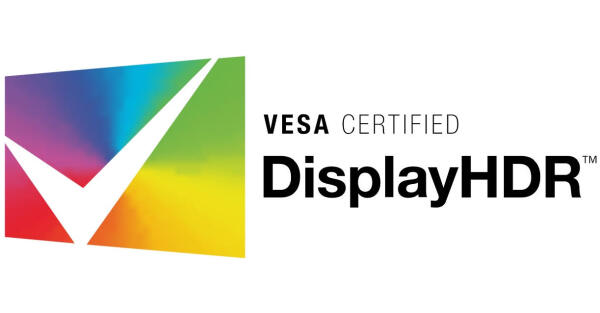[17:16 Tue,14.May 2024 by Thomas Richter] |
The DisplayHDR specifications are designed to help buyers be confident that a display is good enough to truly showcase HDR movies and photos in all their glory. However, the current minimum requirements for HDR-capable monitors according to the standard are quite old, and especially the lowest specification, DisplayHDR 400, was actually not able to guarantee the display of true HDR, which has given DisplayHDR a rather bad reputation among many users.  These shortcomings are now to be addressed by the newly adopted DisplayHDR 1.2 specification, which is why the minimum requirements of the various DisplayHDR standards (DisplayHDR 400/600/1000/1200 as well as True Black 400/500/600) are being raised. This is to ensure sufficient image quality when playing HDR content - which is now increasingly possible for more monitors at more affordable prices due to the constant progress of display technology. The innovations for DisplayHDR 400For the first time, the new DisplayHDR 1.2 now also prescribes a color depth of 10 bits (8 bits plus FRC) for DisplayHDR 400. In addition, monitors that want to boast the DisplayHDR 400 seal must now cover at least 90% of the professional DCI-P3 color space and 99% of the sRGB color space - here is our knowledge article The biggest improvement is probably the first definition of a minimum contrast range, which must now be 1,300:1 - a value not achieved by many displays with IPS or TB panels, which will significantly enhance the actual image quality of HDR on DisplayHDR 400 certified monitors. Guaranteed display quality through more testsThe new DisplayHDR 1.2 specifications include numerous new tests that displays must pass in order to be able to advertise with the corresponding DisplayHDR logo. New tests have been defined for all DisplayHDR standards, including (among others) white point accuracy, black crush, and subtitle flicker, which must be passed, and many of the previous criteria have been tightened. A color accuracy test using the X-Rite ColorChecker SV is now also part of the test arsenal.  The new DisplayHDR specifications Now displays that want to receive the DisplayHDR 500 or 600 seal must demonstrate a contrast ratio of 7000:1 or 8000:1, respectively, and support local dimming (although here it is probably more likely Edge-Lit Local rather than the higher quality Full Array Dimming). Here is a Is a DisplayHDR specification chaos looming?As good as the new specifications are, they will initially lead to more confusion, as VESA will continue to certify displays (and laptop displays until the end of May 2026) according to the now outdated DisplayHDR 1.1 standard until the end of May 2025. Therefore, potential buyers must now carefully check whether a DisplayHDR display has been certified according to the old or stricter new specifications if they want to derive a guaranteed (HDR) minimum display quality from the respective logo - especially with the lower DisplayHDR standards there will then be quite differences in the presentation. Both Asus and LG have already announced that they will soon certify new monitors according to the new 1.2 specifications. Bild zur Newsmeldung:
deutsche Version dieser Seite: DisplayHDR Monitore werden besser - aber es droht das Specs-Chaos |






